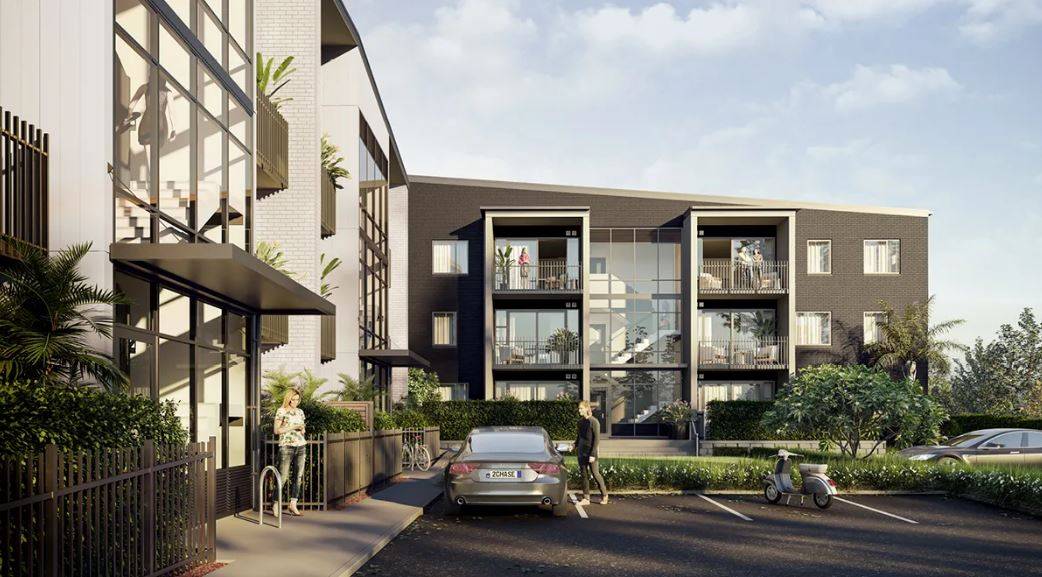The apartments popping up in Auckland’s suburbs today bear little resemblance to those of decades past. They have evolved from the high-rise buildings that tower above busy city streets.
In Auckland’s outer suburbs of Northcote, Mount Roskill and Mangere, you’ll find examples of apartments that are at once smaller in stature and larger in living space — both in terms of the floorplans and the feeling of spaciousness created through smart design.
Three-storey walk-up apartments are emerging as a favoured typology among developers and buyers in Auckland.
Perhaps the most important benefit of building low-rise apartments in the suburbs is the lower cost of land and construction, which helps to make them more affordable for buyers, says Shane Brealey, director of Auckland development company NZ Living. “The largest portion of new apartment developments these days are in the suburbs,” he says. “With lower land and construction costs for low- to medium-rise developments in the suburbs, apartment sizes can be larger and prices lower.”
The quality of new apartments in Kāinga Ora-managed developments is upheld by a minimum 6 Homestar standard, which means they exceed the standards required by the NZ Building Code and are easier and to keep warm, dry, healthy and quiet.
After a somewhat turbulent transformation process, it feels as though the new era of apartments has arrived for Auckland. “We’ve come a long way from the CBD shoe boxes,” Brealey says. The “shoe box” apartments emerged during the central-city building boom from the late 1980s that redefined Auckland’s skyline.
They were targeted at single white-collar workers who flocked to the CBD to work in the growing finance, insurance, property and business service industries.
Following the stock market crash of 1987, many of the city’s underutilised commercial buildings were converted into apartments. Developers also built apartments to house the growing number of international students and other transient populations. Given the target market, small dwellings — some were only 12 square metres — would have seemed suitable at the time.
But there were other forces at play.
The high cost of land and construction in the city centre also influenced developers to pack as many small apartments as they could into each building.
These early apartments served a purpose, but with the benefit of hindsight, developers might have done things differently, Brealey says.
For example high-rise buildings required lifts and lobbies, and the architectural design of facades often included high-maintenance materials, all of which negatively impacted Body Corporate costs over time for owners. Only in the last few years have Aucklanders come around to the idea of apartments as an attractive suburban housing option for people at all stages of life. Granted, the city’s housing supply issues have created an environment in which people are seeking more affordable alternatives.
But the careful masterplanning of neighbourhoods, thoughtful design, and high-quality construction of Auckland’s new suburban apartments are proving what’s possible when higher-density developments are done well.
“Given the price escalation in the housing market many are faced with a long commute from distant suburbs or more conveniently located central suburban apartment options,” Brealey says.
“Buyers are also welcoming the convenience of the low maintenance an apartment offers and the proximity of amenities.” The ability to upgrade local infrastructure, provide shared green spaces, and create a sense of community in Kāinga Ora’s large-scale developments also separates suburban apartments from their city equivalents.
Brealey had experienced first-hand the surging demand for apartments in the suburbs. NZ Living sold 102 apartments in Fraser Avene, which is part of Kāinga Ora’s Northcote Development, off the plan in 2019-2020. Other developments by NZ Living in Lake Road and Awataha Drive in Northcote and Hinaki Street in Pt England achieved more than 90% of sales before the first concrete slabs were poured.
The company also had a further 132 apartments either on the market or in the works at the time, which were attracting a similar level of interest.
Brealey says the USA has approximately 20% and Australia about 10% of their populations living in apartments or condos. “In 2006 NZ was at 0.5% and my guess is that today we are at about 1%,” he says.
“Due to land constraints, affordability, lifestyle changes, populations gravitating to cities for employment, it is likely that New Zealand will follow these overseas trends as our nation continues to grow.”
